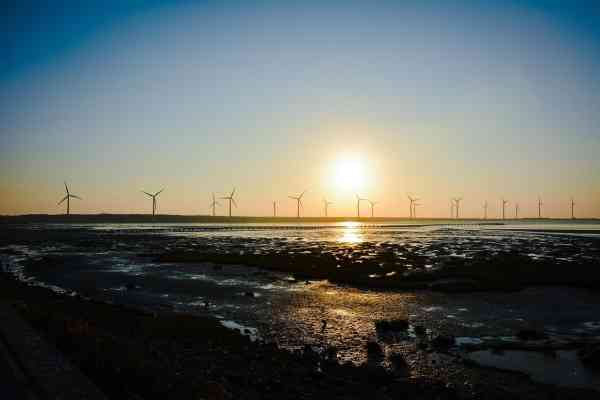Born in Bielefeld, she studied German, English and psychology. The emergence of the Internet in the early '90s led her from university to training in graphic design and marketing communications. After years of agency work in corporate branding, she switched to publishing and learned her editorial craft at Hubert Burda Media.
She discovered the world of the stock market in 1998. With her passion for innovation and digitalization, she focused on companies from the technology and healthcare sectors early on.
Analyzing fundamentals, business models and their scalability is as much her passion as thinking into complex future scenarios. Since 2019, she has regularly organized stock exchange roundtables and attended international investment events to deepen and pass on her knowledge.
Commented by Juliane Zielonka
Commented by Juliane Zielonka on April 4th, 2025 | 07:00 CEST
MiMedia, Porsche, and Xiaomi: A focus on innovation, dividends, and growth
The companies MiMedia, Porsche SE, and Xiaomi impressively demonstrate how innovation and strategic expansion can drive growth in different industries. The New York-based technology company MiMedia is revolutionizing the market for cloud storage solutions by integrating its platform directly into smartphones. With over 35 million preinstalled devices in the next two years, MiMedia expects high revenue potential and is targeting a rapidly growing target group in Latin America. Porsche SE reported a bumpy fiscal year and plans to pay a dividend of EUR 1.91 per preference share. Xiaomi is expanding its expertise in the field of electric vehicles. The technology group is financing the expansion of its EV division, which already generated billions in revenue last year, with a share placement of USD 5.5 billion. We provide an overview of investment opportunities.
ReadCommented by Juliane Zielonka on April 3rd, 2025 | 08:15 CEST
Leisure time in focus: TUI, naoo AG and PUMA share under the microscope
Leisure time and vacations shape the quality of life – and offer opportunities for investors. Whether travel, shared experiences, or sporty fashion, the desire for recreation, experiences, and an active lifestyle provides companies such as TUI, naoo, and PUMA inexhaustible customer groups. As a travel provider, TUI stands for the classic vacation dream and scores with package tours in the upper segment, as well as a billion-dollar cruise deal that has boosted its share price. The Swiss company naoo AG combines everything that makes up social media today in its leisure app: events, games and, most recently, influencer marketing. No wonder the share price is on a growth trajectory. PUMA has discovered the circular economy and is now combining sporty fashion with sustainability. Which strategy is most convincing to investors?
ReadCommented by Juliane Zielonka on April 3rd, 2025 | 07:10 CEST
Novo Nordisk, BioNxt Solutions, Bayer: Three ways to health and returns
The pharmaceutical industry is booming, and three companies are set to be in the spotlight in 2025: Novo Nordisk, BioNxt Solutions, and Bayer. A common goal unites all three: To improve the health of millions of patients through innovative approaches. Investors have the opportunity to participate in their success. While their strategies differ, their focus on research, new therapies, and growth makes them exciting for investors. Novo Nordisk stands out with its obesity drug Wegovy. It reduces the risk of heart disease by 57% – a potential game changer, as obesity is a major contributor to severe cardiovascular diseases. BioNxt Solutions is leveraging fresh capital and future technologies. The Company is developing novel drug delivery systems, including sublingual films, transdermal patches, and oral tablets for autoimmune diseases like multiple sclerosis. With CAD 2.5 million from a private placement, it is ready for the next step. Bayer is pushing ahead with its broad pharmaceutical offensive. In 2025, the Leverkusen-based company will launch drugs for the treatment of cardiovascular diseases, oncology, and women's health – areas with high medical demand and market potential.
ReadCommented by Juliane Zielonka on March 28th, 2025 | 07:00 CET
Tariffs and Markets – Where investors should strike now with Power Metallic Mines, Steyr, and Vonovia
The new US tariffs on cars and goods have become a reality this week, and the markets are reacting with uncertainty: Companies like Power Metallic Mines, Steyr Motors, and Vonovia are in focus – their share prices are responding differently. This moment offers opportunities for investors. The Canadian junior explorer Power Metallic Mines offers long-term investors an exciting field of copper, gold, and valuable battery metals. Steyr Motors shines as a stable growth stock with a EUR 200 million order backlog in the defense sector, despite a price scandal. Vonovia attracts those seeking stability with a 4.2% dividend yield. However, the real estate crisis continues to erode the Company's fundamentals. Market sentiment is tense. The tariffs are testing the resilience of these companies – how they react could set the tone for the coming weeks.
ReadCommented by Juliane Zielonka on March 27th, 2025 | 07:10 CET
First Hydrogen, BYD, Amazon - How hydrogen, e-mobility, and quality control are transforming the economy
The global economy is changing, opening new doors for investors. Three companies are in the spotlight. First Hydrogen is attracting attention with hydrogen and small reactors as an energy source. The founding of the new subsidiary First Nuclear makes it clear: The energy future is being built here. Electric automaker BYD is pushing forward with all its might, aiming to produce 5.5 million vehicles in 2025 - the ambitious goal: To double sales outside of China. With production sites in the EU and other countries, the Company is cleverly avoiding possible tariffs and conquering new markets. Amazon remains a pioneer in its field and relies on green energy and quality: Wind and solar projects are being developed in Spain and Portugal. In addition, it is taking a tough line against brand counterfeiting – the fight against plagiarism in the marketplace has begun. Hydrogen, electric mobility, and quantum technology – these future drivers could fundamentally change existing industries. How exactly are these companies influencing tomorrow's world?
ReadCommented by Juliane Zielonka on March 21st, 2025 | 07:00 CET
BYD, Volkswagen, First Phosphate: Who will shape the future of batteries?
China's electric giant BYD is outpacing Volkswagen. With 322,846 vehicles sold in February 2025, the Chinese automaker is putting the competition under pressure. In addition, Volkswagen continues to lose ground in China, facing a meager profit margin of just 5.9%. The race for e-mobility supremacy is bringing more players into the game: First Phosphate, a Canadian explorer, reports progress in the extraction of high-purity phosphate for lithium iron phosphate batteries. BYD is successfully using these raw materials in its innovative Blade Battery. Volkswagen also aims to score points with electric vehicles and strike back with the ID. EVERY1 model for around EUR 20,000 from 2027. However, access to raw materials remains the ultimate challenge. First Phosphate could become the bottleneck: With the coveted raw material phosphate, the Company could generate USD 700 million in cash flow in three years according to the PEA and thus become a key partner in the battery supply chain. Will this make a Canadian raw materials supplier the secret winner? Investors should follow developments closely.
ReadCommented by Juliane Zielonka on March 21st, 2025 | 06:45 CET
Sustainability as an opportunity for returns: How Nordex, Globex Mining, and SFC Energy are shaping the energy transition
The energy transition is no longer just an ecological promise – it has become a return factor for savvy investors. Three companies are at the forefront of this development. The Nordex Group is driving the expansion of wind energy: With a new 94 MW order for Canada and wind turbines that can survive freezing winters thanks to an anti-icing system, the Hamburg-based company is demonstrating its position as a global player with over 57 GW of installed capacity. Globex Mining Enterprises of Québec acts as a kind of mineral bank for the energy future: Over 200 properties provide raw materials for batteries and technologies. With a recent buyback of gold royalties, CEO Jack Stoch is increasing the value of his company, much to the delight of shareholders. SFC Energy of Bavaria relies on innovation with fuel cells: The EFOY technology – "Energy for You" – supplies remote regions such as northern Canada with quiet, clean energy. A CAD 5 million order further underscores the success of the growing company. Sustainability and profit merge into a concept that inspires investors. Eco-friendly investing and generating returns – are these three stocks the key to the energy future?
ReadCommented by Juliane Zielonka on March 20th, 2025 | 07:10 CET
Steyr Motors, dynaCERT, and NEL – Growth drivers in defense and greentech
Investors love companies that impress with fresh ideas and strong growth. In the greentech and defense sectors, three players are in focus: Steyr Motors AG is convincing in its 2024 annual report with a 9.2% increase in revenue. The defense sector is booming, and the Austrian company's expansion into Asia is making it a global player. A revenue jump of at least 40% is even expected for 2025. The Canadian greentech company dynaCERT is making waves with its HydraGEN™ technology. It is particularly attracting attention in Canada's oil and gas industry because it upgrades heavy-duty diesel engines with hydrogen technology, making it the ideal bridging technology. A new major order for over 140 units proves how dynaCERT combines innovation, efficiency, and ESG goals. Nel is cooperating with SAMSUNG E&A in the hydrogen sector: SAMSUNG is integrating Nel's electrolysers into its hydrogen plants and acquiring 10% of the shares. Three companies, three paths – what opportunities could arise for your portfolio?
ReadCommented by Juliane Zielonka on March 13th, 2025 | 07:00 CET
Big Pharma's billion-dollar markets under pressure – NetraMark as the key for Bayer and Novo Nordisk?
In 2025, the pharmaceutical market faces significant challenges, including rising costs and regulatory hurdles. In this environment, companies like NetraMark, Bayer, and Novo Nordisk could make a significant difference through innovative solutions and strategic partnerships. NetraMark, a Canadian HealthTech company, is revolutionizing clinical trials with AI technology, which could be particularly beneficial in the areas of research into active ingredients for the central nervous system and in oncology. These are currently the biggest dropouts in industry. NetraMark's technology could increase the efficiency of drug development and open up new opportunities for investors. Bayer is focusing on targeted therapies in precision oncology and has a promising drug in development that specifically targets an overarching mutation in various cancers. Novo Nordisk is cementing its reputation as an innovator in the fight against chronic obesity, particularly with its successor to the obesity drug CagriSema. The Phase III REDEFINE 2 study achieved its primary objective, although the results fell short of high expectations. A closer look is now warranted.
ReadCommented by Juliane Zielonka on March 12th, 2025 | 06:55 CET
Eutelsat, MiMedia, Xiaomi – The infrastructure for the networking markets of the future, worth billions
Millions of people in emerging markets are gaining access to digital markets – a potential of great importance to investors. The French satellite communications company Eutelsat is realizing this with its satellites such as EUTELSAT KONNECT, which bring broadband internet to remote regions of Africa and the Middle East, opening up billion-dollar markets. Eutelsat is particularly active in Europe, Africa, the Middle East, and Asia. The software company MiMedia is profiting from this connectivity by providing its cloud platform on Android smartphones. The software is the small tile for your users' pictures on the smartphone, preinstalled upon activation. MiMedia achieves this implementation through partnerships such as with América Móvil, one of the largest telecommunications providers in LATAM. MiMedia, with roots in New York City, is already expanding in Africa, reaching millions of users. The Chinese tech company Xiaomi complements this with affordable hardware: With 43.1 million smartphones shipped in Q3 2024 and the new Xiaomi 15 series, it is tapping into global markets, seamlessly integrated into cloud and satellite networks. Together, they are creating an infrastructure that generates billions of dollars in revenue in high-growth regions.
Read










